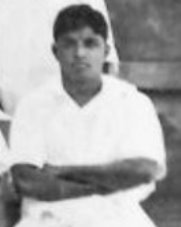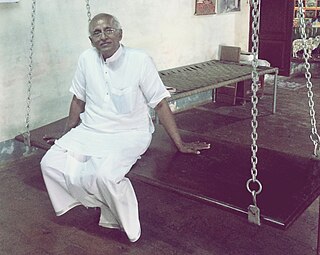
R. Prasanna, is a pioneer in performing Carnatic music on the guitar. He also plays jazz, progressive rock, and world fusion.

Madras Music Academy is one of the earliest established music academies in South India. Before the concept of infrastructure was introduced to India in the early 1920s, it was a gathering for elite musicians simply called Music Academy It plays an important role in encouraging and promoting primarily the Carnatic Music Indian art form. It played a vital role in the revival of the Indian classical dance form of Bharatnatyam in the 1930s when it faced near extinction due to a negative connotation caused by conservative societal standards.

Harikesanallur Muthiah Bhagavatar, commonly known as Muthiah Bhagavatar, is one of Carnatic classical music's famous twentieth-century composers. He also created about 20 ragas.
Tiruchy L. Saravanan, also known as Flute Saravanan, is a prime disciple of Dr. N. Ramani, one of India's pioneer Carnatic flautists.
Trichy Sankaran is an Indian percussionist, composer, scholar, and educator. He was awarded the Madras Music Academy's Sangeetha Kalanidhi in 2011. As a mridangam vidwan, he has been called a "doyen among the percussionists of India" in Sruti magazine. Since the early 1970s, he has performed and recorded in a number of cross-cultural projects. In 2017, he was awarded the "Tiruchirapalli Carnatic Musicians Lifetime Achievement Award".

Palghat T. S. Mani Iyer (1912–1981), born Thiruvilvamalai Ramaswamy was one of the leading mridangists in the field of Carnatic music. He, along with his contemporaries Palani Subramaniam Pillai and Ramanathapuram C. S. Murugabhoopathy, are revered as the "Holy Trinity of Mrudangam". Mani Iyer was the first mridangist to be awarded the Sangeetha Kalanidhi (1966) presented by the Music Academy of Madras, the Padma Bhushan (1971) and the Sangeet Natak Akademi Awards(1956) presented by the Government of India.

Umayalpuram Kasiviswanatha Sivaraman is an Indian musician and exponent of the Carnatic percussion instrument, the mridangam. He is a recipient of the Padma Vibhushan as well as the Sangeet Natak Akademi Award.
Palghat R. Raghu was a Carnatic musician and percussionist. He was awarded the Madras Music Academy's Sangeetha Kalanidhi in 2007.

Erode Nagaraj is a professional musician, who plays the mridangam. He learned initially from Palladam V. Ramachandran and has been the disciple of Umayalpuram K. Sivaraman for over 28 years.
Chingleput Ranganathan was a classical Carnatic vocalist and Guru.

Thanu Krishna Murthy, better known as T. K. Murthy, is an Indian mridangam player. Murthy is a Padma Shri and Sangeetha Kalanidhi awardee.
K. S. Narayanaswamy, was a Carnatic veena exponent of the Thanjavur style, in which nuances and subtleties are given more importance over rhythm based acrobatics. He was awarded the Madras Music Academy's Sangeetha Kalanidhi in 1979.
Srimushnam V. Raja Rao is an Indian mridangam player and Carnatic vocalist.

Vellore G. Ramabhadran was a Mridangam artiste from Tamil Nadu, India. He was awarded the Madras Music Academy's Sangeetha Kalanidhi in 2004.

T. M. Thyagarajan fondly known as TMT was a Carnatic vocalist and musicologist from Tamil Nadu in Southern India. He was awarded the Madras Music Academy's Sangeetha Kalanidhi in 1981.
Nagercoil Ganesa Iyer (NSG) (1905—1978) was a prominent carnatic musician and exponent.

Tanjavur R. Ramamoorthy was a vidwan in Indian classical music, playing Carnatic music on the mridangam, an ancient Indian percussion instrument. The mridangam is the primary rhythmic accompaniment in a Carnatic music ensemble, and in the Dhrupad genre, where it is known as a pakhawaj.

Karaikudi Sambasiva Iyer Subramanian is a veena player in the Karaikudi Veena Tradition. He is the grandson of Karaikudi Subbarama Iyer and adoptive son of Karaikudi Sambasiva Iyer.
Madras A. Kannan was a Mridangam exponent from Tamil Nadu, India. Due to his outstanding performances in the field of percussion, he is often called as the Mrudanga Samrat which literally means "Emperor of Mridangam". He received several awards including Sangeet Natak Akademi Award and Kalaimamani.

Sukanya Ramgopal is an Indian carnatic musician from Tamil Nadu. She is best known as the first woman ghatam player in Carnatic music. She is also proficient in carnatic vocal, violin, mridangam and veena. She received several awards including Sangeet Natak Akademi Award, Karnataka Sangeeta Nritya Academy Award and awards from Madras Music Academy, Chennai.










